When I was at school in Hawaii during my first year of college, one of my Tongan roommates gave me a traditional Tongan woven mat. Since then, I have seen woven mats used for sleeping throughout many parts of the world.
Handwoven natural materials have been used for centuries as sleeping mats. Each area of the world would have its mats and ways of weaving the mats but what is universal is that the mats were all used for sleeping and handwoven. Today, many of these same mats are used for home decor and furniture production.
Table of Contents
- Hand Woven Natural Mats For Sleeping
- Restful Slumber on Nature’s Lap: Our Top Picks for Natural Sleeping Mats
- Frequently Asked Question
- Related Content
Hand Woven Natural Mats For Sleeping
Since almost the beginning, men and women have figured out that they could dry natural woven materials and then hand-weave them into mats and other objects for sitting and sleeping on. Today, many of these same mats are very popular and used to develop home decor and home furnishing products and furniture.
Today, many of these same mats are still being handwoven worldwide. Each area may use different materials and even different weaves for these mats. What is common among them is that traditionally, they were the mats used for sleeping before we had mattresses, bedding, or bed sheets.
Restful Slumber on Nature’s Lap: Our Top Picks for Natural Sleeping Mats
In today’s fast-paced world, a good night’s sleep is more precious than ever. But how often do we pause to consider what we’re sleeping on? Moving away from synthetic materials, many are rediscovering the joys and benefits of natural sleeping mats.
These eco-friendly options provide comfort and bring a slice of nature into our bedrooms. This article explores some of our favorite natural mats, each offering a unique blend of sustainability, comfort, and health benefits.
From Japan’s traditional tatami to Southeast Asia’s innovative bamboo mats, join us in uncovering the treasures of natural sleeping solutions that promise a serene and healthful rest.”
Here are some of our favorite natural mats that are used for sleeping:
The Petate Sleeping Mat – An Ancient Sleeping Mat
The Petate sleeping mat goes back to the Mesoamerican Pre Hispanic period of the world; in fact, the name is from the Aztec language from the word “petlati.”
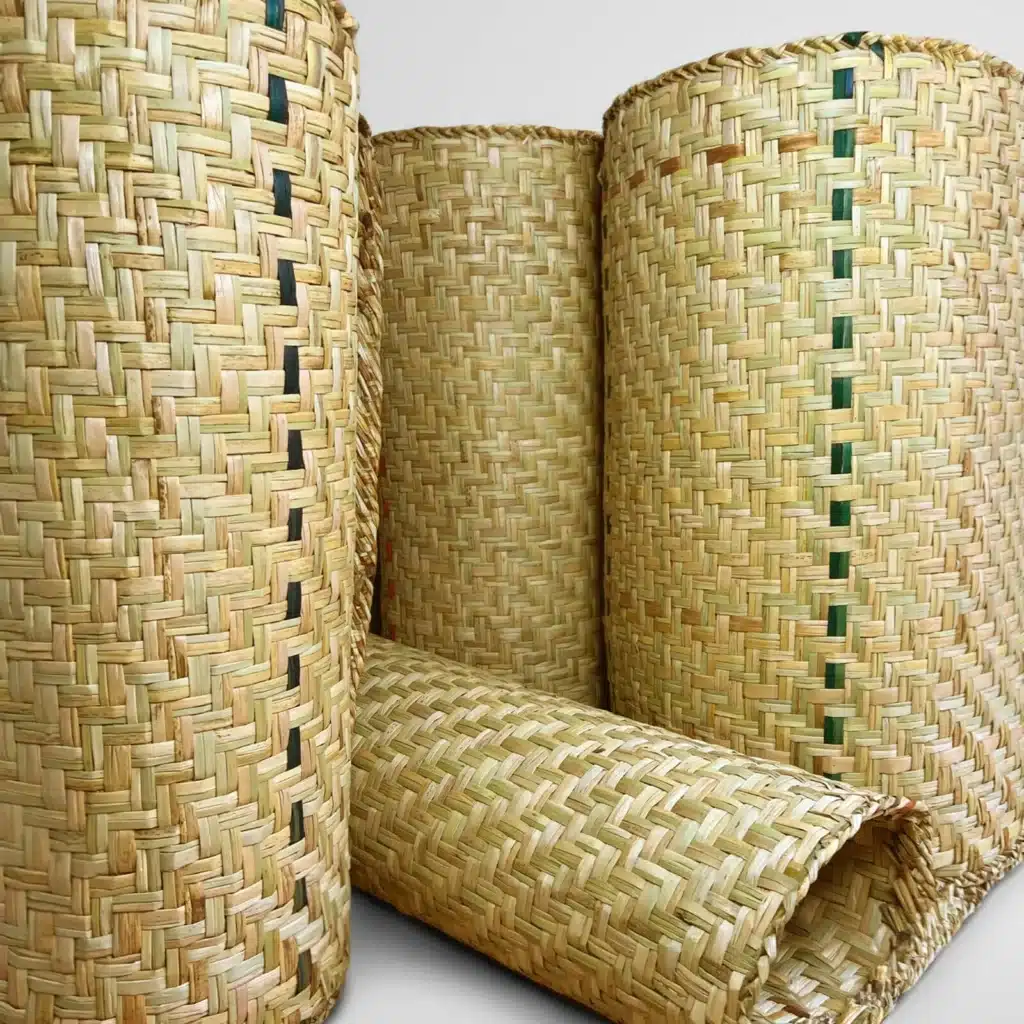
These mats are woven in handwoven natural fibers in various sizes and types of weaves. The same weaving technique was used to make other items such as baskets, hats, and other valuable products.
The importance of these mats is to understand that before the world had mattresses, sheets, or other types of bedding, most of the world slept on handwoven mats made from natural fiber.
The Japanese Handmade Woven Natural Tatami Mat
The Tatami mats are made from grass materials and are handwoven. Tatami mats can come in a variety of sizes.
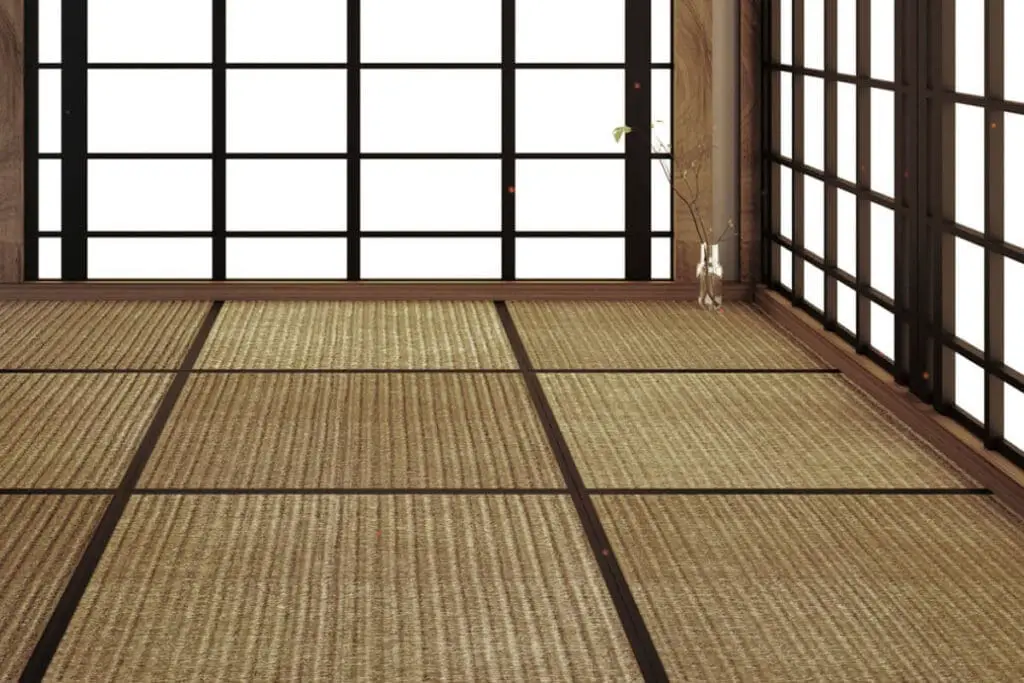
The Japanese Tatami mats date back to Japan’s 8th Century or Nara period. The Tatami mats in Japan were used initially for sleeping but mainly for nobility and upper-class citizens.
Around the 16th century in Japan, tatami mats began to be used throughout the home and on the floors to cover an entire room, not just for sleeping. By the 17th Century, the Tatami mats were used throughout society.
Today, many Japanese homes still have some tatami mats. They can be used for floor coverings or for sitting on them.
The Filipino Handmade Woven Natural Banig Mat
The Filipino Banig mat is the traditional sleeping mat in the Philippines. Depending on the area of the Philippines, the mat can be handwoven from Buri (palm) or reed leaves. Some of the natural materials are dyed so that the mats can have a variety of colors and designs woven into them.
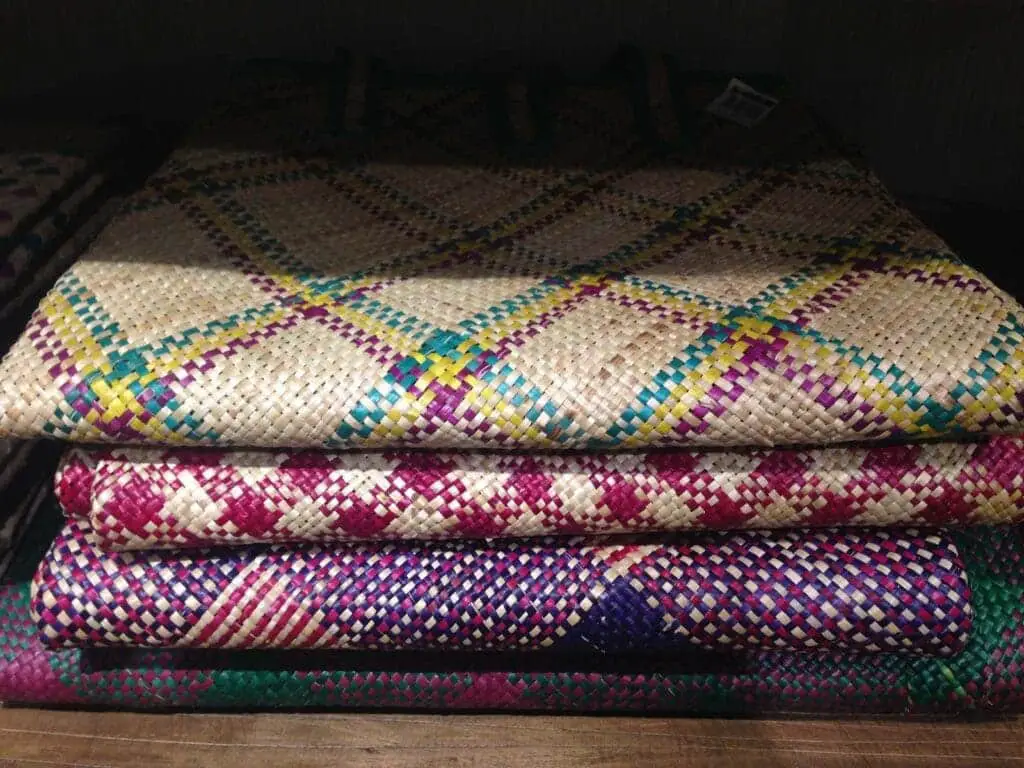
Banig weaving is a century-old practice in Basey. The weaving helped this area of the Philippines flourish as it became a household industry and a prime source of income. The weaving tradition has been passed down from generation to generation.
The Banig mat can still be found in markets throughout the Philippines.
The Vietnamese Handmade Woven Natural Chieu Or Reed Mat
Vietnamese people have been sleeping on the Chieu or handwoven natural reed mat like the rest of Asia, particularly southeast Asia. Villages in Vietnamese have been weaving these mats for centuries.
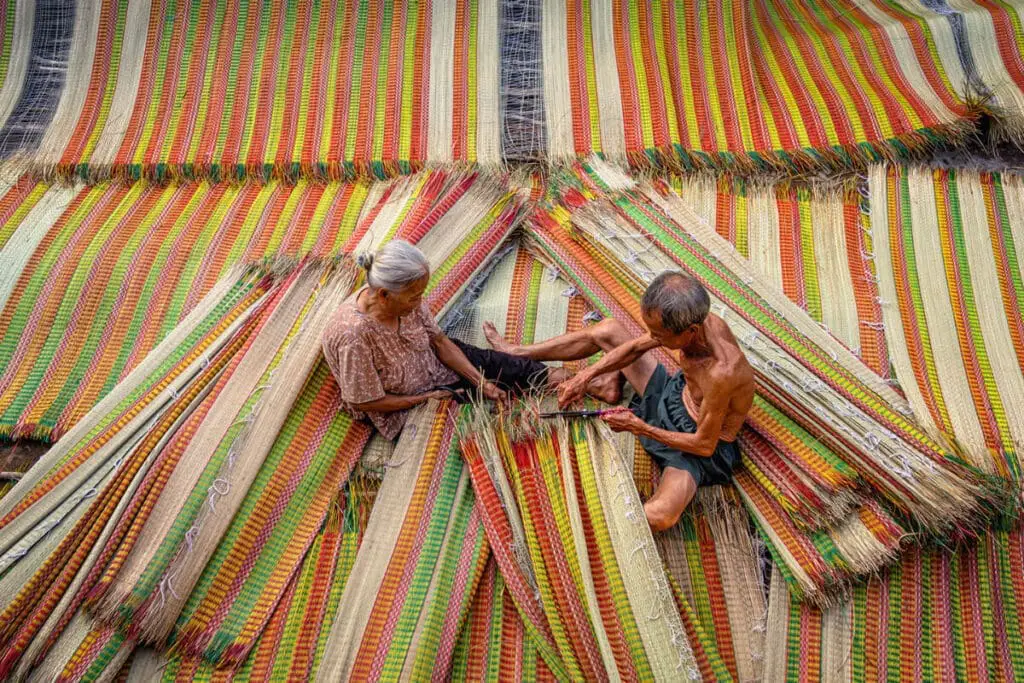
Mat weaving in Vietnam has considered a simple craft since the weaving of the mats takes little training and skill. Many mats are put on a loom where two people will weave them in harmony. One person will control the shuttle and the other the loom.
Vietnamese have been sleeping on these beautiful handwoven mats for centuries. The Vietnamese sleeping mats can still be found in markets throughout Vietnam; many households will still have these mats in their home, and many people continue to sleep on them during the warmer summer months.
The Polynesian Tapa Handwoven Natural Mats
The Tapa mat is a mat that is found throughout all of Polynesia. One of the names these mats are called is Tapa, but different names throughout the region know them. In Hawaii, these mats are called Kapa.
The Tapa mats are made from beaten barkcloth fabric. The barkcloth is made by beating the tree’s inner bark strips and weaving them into mats.
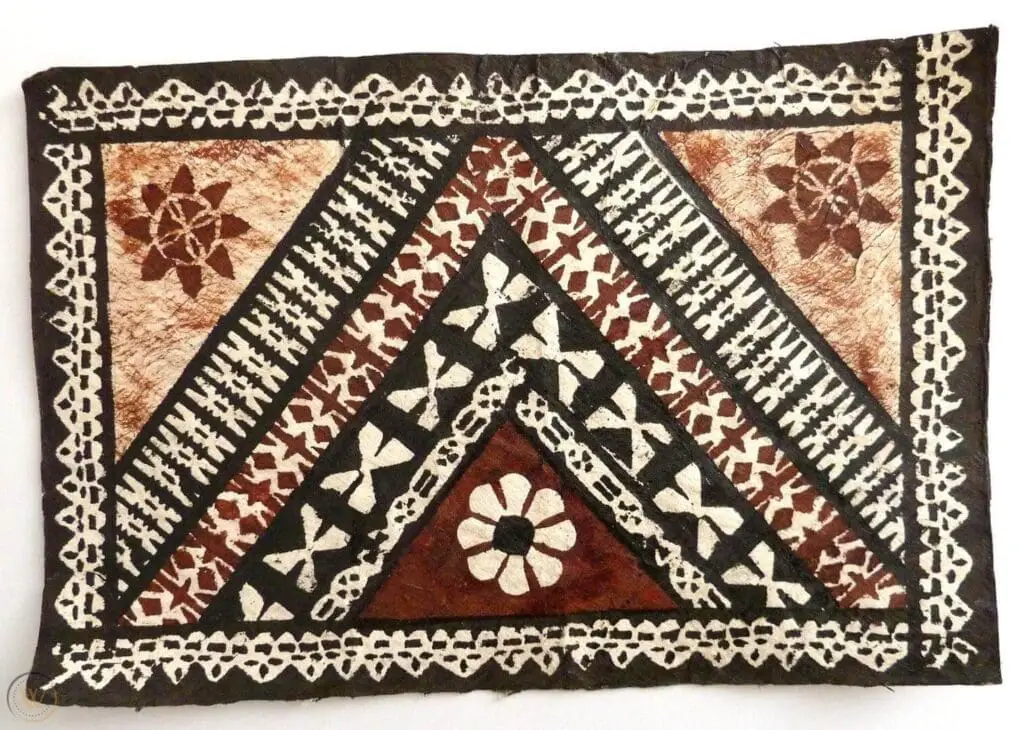
Traditionally the Tapa mats are used for ceremonial clothing, mats, and sleeping mats. Many of these Tapa mats are very finely woven.
Handwoven natural sleeping mats have been a tradition for a long time, especially throughout many regions of the world. Almost all parts of the world have some tradition of handwoven natural sleeping mats.
The handwoven natural sleeping mats were used as a way of sleeping before we had a mattress, bed, sheets, and other bedding.
Many of these same weaves are used for furniture, baskets, and other home decor items today.
If you are interested in seeing how Mondoro can help you with handwoven mats and other home decor products – we would love to talk to you about how we can help you.
Find out more about how Mondoro can help you create, develop, and manufacture excellent home decor and furniture products – don’t hesitate to contact me, Anita. Check out my email by clicking here or become a part of our community and join our newsletter by clicking here.
Mondoro gives out a FREE Lookbook to anyone interested. You can receive a copy of our latest Lookbook by clicking here.
Listen to our Podcast called Global Trade Gal. You can find it on all major podcast platforms. Try out to listen to one of our podcasts by clicking here.
Subscribe to our Mondoro Company Limited YouTube Channel filled with great videos and information by clicking here.
Frequently Asked Question
Why are handwoven mats traditionally used for sleeping?
Handwoven mats have been traditionally used for sleeping due to several reasons, including their comfort, durability, breathability, and cultural significance.
What makes handwoven mats comfortable for sleeping?
Handwoven mats often provide a comfortable sleeping surface due to their flexible and resilient nature, which allows for even weight distribution and support.
Are handwoven mats more durable than other types of sleeping surfaces?
Yes, handwoven mats are generally more durable than other sleeping surfaces. The weaving technique and the use of natural materials enhance their strength and longevity.
Why are natural materials preferred for handwoven mats?
Natural materials, such as grasses, reeds, or bamboo, are preferred for handwoven mats because they offer better breathability, temperature regulation, and are environmentally friendly.
What are the advantages of using handwoven mats for sleeping?
Handwoven mats provide advantages such as improved air circulation, reduced heat retention, prevention of moisture buildup, and the ability to conform to body contours.
Why have handwoven mats been used for centuries?
Handwoven mats have been used for centuries because they were readily available, affordable, and allowed people to sleep comfortably on the ground or other hard surfaces.
What cultural significance do handwoven mats hold?
Handwoven mats often have cultural significance and can be associated with traditions, rituals, or ceremonies in many societies. They can also represent a sense of community and craftsmanship.
Can handwoven mats be used for purposes other than sleeping?
Yes, handwoven mats have versatile uses beyond sleeping. They are commonly used as floor coverings, wall hangings, picnic mats, meditation mats, and as decorative elements in home interiors.
Related Content
Hand Weaving Rattan Mats for Home Decor Products, What You Need To Know
The rattan mats are woven by hand on handlooms with small electrical motors. The rattan is cut into small pieces and dyed or left natural before hand-woven. The workers who weave the rattan must be highly skilled and able to work quickly and accurately. There are a variety of home decor and home furniture products that rattan mats can be used on.
You can discover more by reading Hand Weaving Rattan Mats for Home Decor Products, What You Need To Know by clicking here.
5 Steps To Natural Rattan Materials Processing Explained
Processing the rattan materials can also be labor intensive. Two main methods are used to process the rattan materials: traditional and modern. The more modern method cures the rattan; most rattan processed today uses this method.
You can learn more by reading 5 Steps To Natural Rattan Materials Processing Explained by clicking here.
100% Handwoven Natural Area Rugs Guide
Natural area rugs are made from 100% natural materials such as jute, sisal, seagrass, and water hyacinth. These rugs are usually hand-woven or machine-made. The hand-woven rugs in Vietnam help support entire communities involved in some aspect of the production of the rugs. With some basic care and cleaning, your rugs can last long.
You can learn more by reading our blog 100% Handwoven Natural Area Rugs Guide by clicking here.


